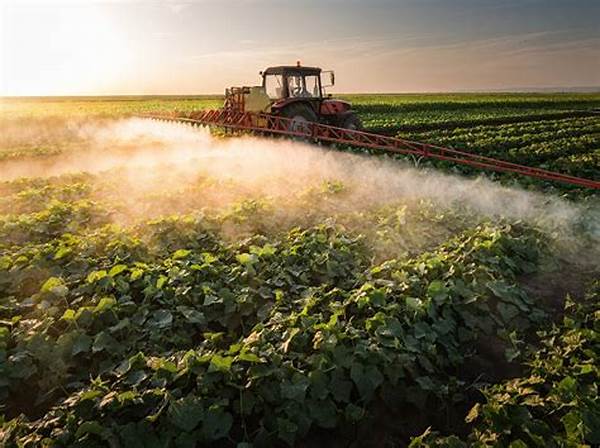Farms are more than just expanses of cultivated land; they are the heartbeats of rustic communities, the backbone of our sustenance, and often, a family’s legacy. Yet, the burden of pesticide drift looms like an uninvited shadow, threatening the very soul of these cherished lands. Minimizing pesticide drift in farms is not just a technical necessity—it’s a moral imperative. Those who work the land, who rise with the sun and toil beneath its gaze, understand the sacred balance between nurturing crops and protecting the world around them. It’s a balance as delicate as the dance of morning dew on a leaf and as profound as the generations who have walked before us.
Read More : High-performance Pump Filtration Systems
Understanding the Impact of Pesticide Drift
Minimizing pesticide drift in farms calls for a profound understanding of its impact. The drifting of chemicals from their intended targets is not just a misallocation of resources, but a poignant reminder of how closely interlinked human actions and the environment truly are. The consequences of pesticide drift extend beyond farms, infiltrating neighboring ecosystems and affecting non-target plants, wildlife, and even human health. For farmers, reducing pesticide drift is akin to shielding their life’s work from being tainted by unforeseen externalities.
To truly grasp the essence of minimizing pesticide drift in farms, one must appreciate the interrelatedness inherent in agricultural landscapes. When pesticide drift clouds the air, the tranquil songs of birds may become distant, the vibrant colors of wildflowers may fade, and the harmony of the ecosystem may be disrupted. A farmer’s awareness of these subtle shifts spurs a deep-seated desire for change, driven by an instinctive quest to preserve and protect.
Embracing the cause of minimizing pesticide drift in farms demands more than mere adherence to best practices. It requires a heartfelt commitment to future generations who will inherit the land. Farmers heed the call to innovate, adopt buffer zones, and engage in practices that foster an equilibrium, ensuring their efforts sow respect for nature as much as they yield the sustenance of crops.
Building Sustainable Practices
1. Empathy for Environment: Implementing techniques aimed at minimizing pesticide drift in farms springs from an empathy that reaches beyond human boundaries, enveloping the delicate ecosystems nurtured within agricultural landscapes.
2. Heritage Protection: Every effort to minimize pesticide drift in farms echoes a deeper intent—to safeguard the timeless legacies that these lands represent and ensure that they remain untarnished for future generations.
3. Community Consciousness: Minimizing pesticide drift in farms unites communities in the shared stewardship of the land, nurturing bonds that transcend individual fields and create a collective advance toward sustainable futures.
4. A Commitment to Innovation: The quest for minimizing pesticide drift in farms fuels innovation, leading to the adoption of cutting-edge technologies and practices that marry productivity with ecological responsibility.
5. Nature’s Chorus: Deliberate initiatives to minimize pesticide drift in farms strive to maintain the intuitive harmony between agriculture and nature, ensuring that the rhythmic cadence of life in rural landscapes remains undisturbed.
The Farmer’s Perspective
The call to action for minimizing pesticide drift in farms resonates deeply within every farmer’s heart. For the stewards of the land, this responsibility goes beyond mere compliance with environmentally-friendly guidelines; it is about honoring a deep reverence for the natural world. Each time a farmer deploys advanced technologies or invests in windbreaks, they are acknowledging the interconnectedness of life—recognizing that each action reverberates across fields, forests, and beyond.
Farmers, who feel the earth beneath their feet and taste the sun in the bounty of their harvest, are acutely aware of the stakes involved. By prioritizing the minimizing of pesticide drift in farms, they stand as guardians over a rich tapestry of life. Each decision to embrace eco-sensitive measures speaks to their emotional bond with the soil they cultivate, and a pledge to uphold the integrity of their produce, protecting it as a legacy for those who will till after them.
Fostering a Legacy of Awareness
In the broader context of rural landscapes, minimizing pesticide drift in farms is not a mere transactional act but a legacy-building endeavor. This journey encapsulates more than adherence to regulations; it reflects a pivotal shift toward conscious, deliberate farming practices woven with the threads of environmental stewardship. The rich history and future promise of farmlands depend on such awareness becoming part of the agricultural ethos, embraced by farmers, communities, and policymakers alike.
Minimizing pesticide drift in farms is about fostering an understanding that we are temporary custodians of our surroundings. It is about honoring the land from which life springs and ensuring that it continues to thrive amid growing environmental challenges. Sustainability in agriculture is not just an objective; it’s a testimony of a persistent yet gentle revolution whose echoes will shape the course of generations.
Conclusion: Bridging Heart and Soil
Minimizing pesticide drift in farms transcends mere agricultural practice—it embodies a profound respect for the fragile beauty of nature. In navigating the fine line between necessity and care, farmers forge a connection not just with their land, but with the Earth itself. By championing the reduction of pesticide drift, they ensure that their labor is not just fruitful, but sustainable, nurturing the soil to nourish dreams yet to come.
Efforts in minimizing pesticide drift in farms symbolize the eternal dance between humanity and the earth, performed with an unwavering commitment to preservation and with a reverent nod to what has been and what shall be. This dedication ensures that rural landscapes will continue to echo with the vibrant sounds of life and possibility—a true testament to that which is yet to be harvested by the hands and hearts we are merely borrowing from the next.
